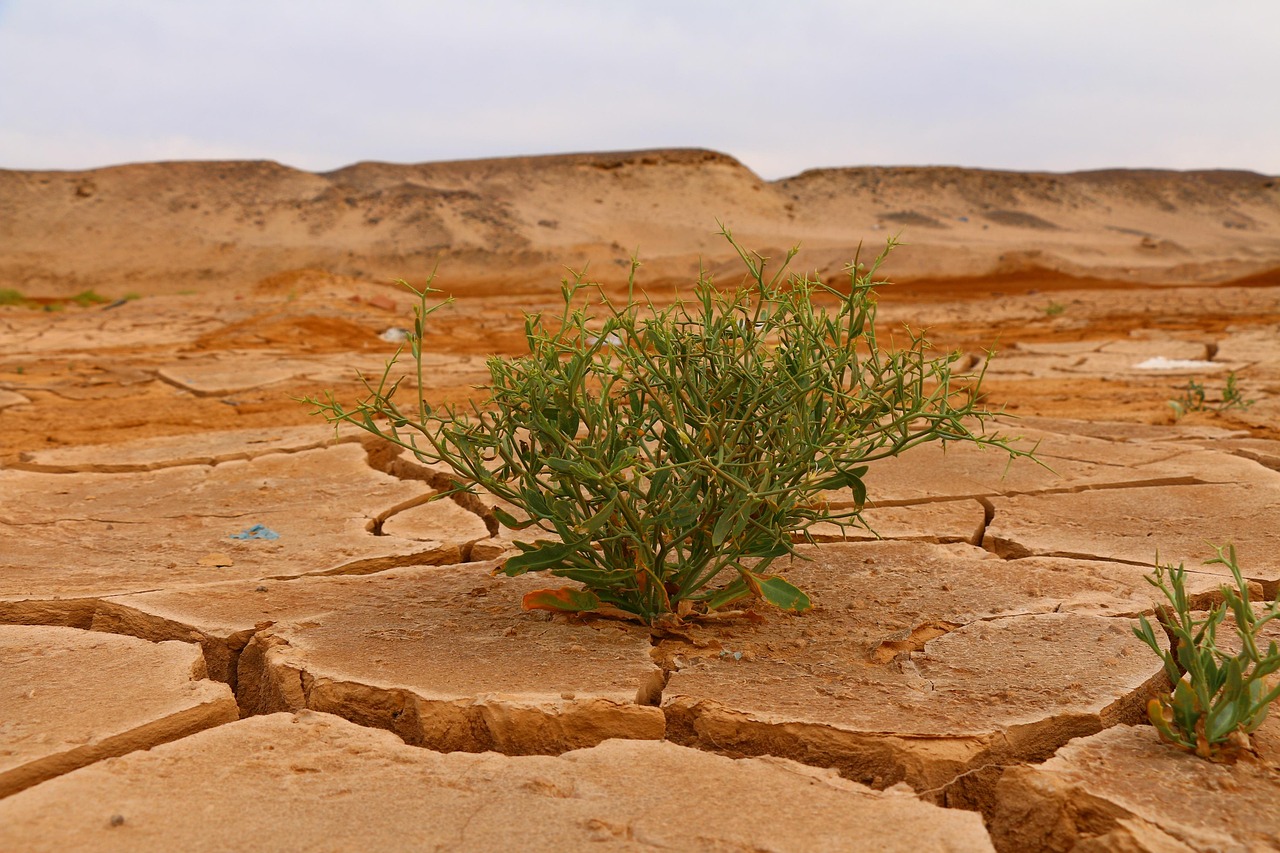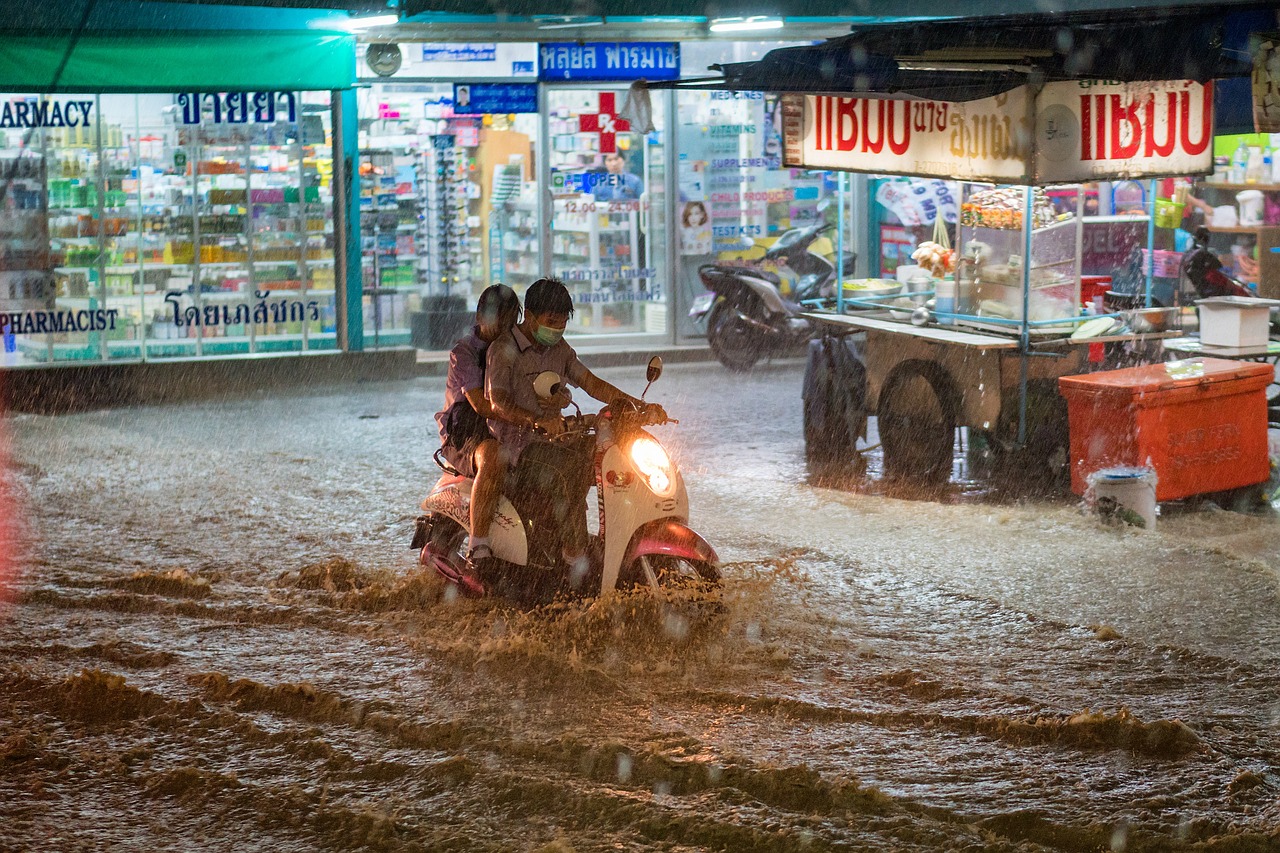Climate migrations
Migrations in the shadow of climate changes

Climate Migration: The Challenge of Our Times
Climate change is forcing millions of people around the world to flee their homes and seek safer places to live. Climate migration is a complex and dynamic phenomenon with serious social, economic, and political consequences. This article examines the causes and consequences of this global problem and presents strategies and solutions that can help effectively manage climate migration. From investments in local community adaptation, through legal changes and international cooperation, to technological innovation and education, let’s explore how we can collectively address this crisis and build a safer future.
Consequences of migrations
Causes of climate migration
Climate-related migration is a topic that is gaining importance in the face of global climate change. As a result of phenomena such as global warming, changes in precipitation, and rising sea levels, more and more people are changing their place of residence. The causes of these migrations are complex and multifaceted, and their consequences affect many aspects of social, economic, and political life. In this sub-article, we will look at the main causes of climate migration that affect millions of people around the world. Climate change and its impact on the environment
The climate change we have been witnessing in recent decades is largely caused by human activity, particularly greenhouse gas emissions. Global warming leads to many undesirable effects, such as:
Rising sea levels: As glaciers melt and seawater expands at higher temperatures, sea levels are rising, causing coastal erosion and flooding of coastal areas. Sea level rise particularly affects small islands and densely populated areas along coastlines, such as river deltas (e.g., the Mekong Delta in Vietnam) and the coast of Bangladesh. Extreme weather events: An increased number of hurricanes, floods, droughts, and other extreme weather events is leading to damage to infrastructure and homes. Many people are forced to abandon their homes due to damage caused by floods, tornadoes, or hurricanes, which are becoming more frequent and stronger as a result of global warming. Droughts and reduced water availability: Changing rainfall patterns are leading to more frequent droughts, which have a particular impact on areas dependent on agriculture. Water shortages in regions such as sub-Saharan Africa, the Middle East, and India are forcing people to migrate in search of better living and working conditions.
Phenomena associated with land degradation: Climate change, including rising temperatures and reduced rainfall, leads to soil degradation. This means that areas once used for agriculture are becoming less fertile, and food production is becoming difficult or impossible. Farmers, especially in developing countries, are forced to migrate in search of more fertile land.
Internal migration and international migration
Climate-related migration can be divided into two main types: internal migration, when people move within their own country, and international migration, which involves crossing national borders. Both types of migration have their own specific causes and effects. Internal migration: Many people are forced to leave their homes but remain within their own country. An example of this is the migration of people within South Sudan, where, after many years of war and drought, climate migrants are moving in search of water and arable land. In countries such as the Philippines, Bangladesh, and Vietnam, migrants from coastal areas that are regularly flooded are moving inland in search of safer areas.
International migration: When regions become too hostile to live in as a result of climate change, people decide to emigrate to other countries. Often, these are people who do not have sufficient resources or support to survive in their home countries. Such migration often becomes an international problem, as host countries face difficulties in integrating new arrivals. Examples include the migration crises on the borders of Europe and North America, where people from countries affected by climate change, such as Haiti, Honduras, and El Salvador, are seeking better living conditions.
Changes in agriculture and food as drivers of migration
Rising temperatures and changes in rainfall patterns are having a dramatic impact on agricultural production. An example is the Sahel region of Africa, where declining rainfall is making it increasingly difficult to maintain crops. In such areas, many farmers decide to migrate because their land is becoming unproductive. Climate change also leads to higher food prices, which worsens the situation of people already living in poverty, forcing them to seek better living conditions.
Similarly, in Latin America, particularly in regions such as northern Mexico and Guatemala, climate change is leading to an agricultural crisis, reducing crop yields and changing traditional food production patterns. In such conditions, often with no prospects for the future, local farmers decide to migrate, seeking alternative sources of livelihood in cities or abroad. Political and economic aspects of climate migration
Climate migration is not only an environmental issue, but also a political and economic one. Governments in many countries are not always prepared for the enormous demographic changes associated with migration. Developing countries in particular, which have limited resources to manage migration crises, face a major challenge. In the face of climate change, many countries are becoming increasingly dependent on international aid to adapt to new conditions and support those affected by migration.
In turn, migration can lead to social tensions in host countries, especially when migrants do not have the resources to integrate into the local labor market and society is not ready to accept new members into their communities. In developed countries in particular, where society is less homogeneous and more diverse, concerns may arise about the adaptation and integration of climate migrants. Summary:
The increased frequency and intensity of natural disasters such as hurricanes, floods, and droughts, combined with rising temperatures, is leading to the emergence of new “risk zones.” These include coastlines, low-lying areas, and agricultural areas, which are increasingly becoming uninhabitable. Changes in climatology may also render some regions completely uninhabitable, forcing their inhabitants to migrate, sometimes at very short notice.
In particular, rising sea levels pose a serious threat to Pacific islands such as Kiribati and Tuvalu, and to the Ganges Delta in Bangladesh, where entire communities may be forced to flee inevitable flooding. These islands are particularly vulnerable because they are already struggling with flooding and coastal erosion. In such cases, migration may not be just a short-term issue—it may become a permanent necessity, changing the social and political landscape around the world.
Migration in the context of conflicts over natural resources
Climate change can lead to inter-state tensions and local conflicts over access to increasingly scarce natural resources such as water, fertile land, and animal feed. In particular, regions that are already unstable due to war, poverty, and poor governance will be increasingly vulnerable to further exacerbation of humanitarian and migration crises.
An example of this is the situation in the Sahel region of Africa, where rain-fed agriculture is becoming increasingly difficult as rainfall decreases. Many farmers, forced to leave their homes due to water shortages, are migrating. Unfortunately, they encounter resistance and conflict with other groups who are also looking for new territories. This phenomenon can lead to so-called “water wars,” which will become increasingly common in the coming years, especially in the Middle East, Central Asia, and parts of Africa.
In regions such as Sudan, Ethiopia, and Yemen, where conflicts over natural resources are already ongoing, climate change may exacerbate inequalities and contribute to the escalation of tensions. Lack of access to drinking water, declining crop yields, and loss of livelihoods could lead to outbreaks of violence, and migration from these areas will be inevitable.
The role of international organizations in managing climate migration
With the growing number of climate migrants, international organizations such as the UN, IOM, and NGOs play a key role in managing this issue. There is a need to develop global policies and solutions that will enable more effective migration management in the context of climate change.
An important step is to recognize climate migration as a legitimate political issue. In 2018, the UN adopted the Global Compact for Safe, Orderly and Regular Migration, which addresses migration in the context of climate change and environmental degradation. Although this document does not create new legal obligations, it emphasizes the need for countries to cooperate in managing human flows resulting from environmental crises.
Another example of international action is the creation of the Green Climate Fund, which aims to support developing countries in adapting to the effects of climate change and counteracting migration resulting from these changes. The fund provides financial resources for projects related to adaptation, environmental protection, and migration.
Nevertheless, there are no easy solutions to the problem of climate migration. There is often a lack of adequate resources, and less developed countries face difficulties in responding to internal and international migration. That is why it is so important for international cooperation to be based on long-term, coordinated actions that take into account environmental, social, and legal aspects.
Examples of countries taking action in the face of climate migration
Some countries, especially those directly exposed to the effects of climate change, are already taking initiatives to mitigate the effects of climate migration. These include the Maldives, which is one of the most vulnerable countries in the world due to rising sea levels. The Maldivian government is not only trying to counteract the phenomenon of rising ocean levels, but is also making efforts to find new, safe places for the inhabitants of the islands in the event of some areas being completely flooded.
Similarly, Bangladesh—a country that regularly faces floods, cyclones, and droughts—has introduced early warning systems and post-disaster recovery strategies to minimize the consequences of internal migration. Bangladesh also works with international organizations to help people affected by climate migration, offering support in areas such as education, health, and humanitarian aid.
In Tuvalu, an island nation in the Pacific, the government is seeking international assistance to evacuate its citizens in the event that the islands become completely submerged by ocean waters. Tuvalu is in talks with other governments, such as New Zealand, to prepare possible relocation plans.
Causes of climate migrations
Causes of climate migration effects
The effects of climate migration—such as social tensions, infrastructure overload, and political instability—do not arise in a vacuum. They are the result of specific mechanisms and socio-economic conditions that are particularly evident in crisis situations. In this section, we will analyze the most important causes of the effects of climate migration, with an emphasis on their systemic and structural sources.
Inefficiency of state structures
One of the main causes of the negative effects of climate migration is the insufficient capacity of state structures in countries experiencing large migration flows.
In many developing countries, such as Bangladesh, Sudan, and Haiti, local and central authorities do not have the resources to provide assistance to large numbers of climate migrants. Often, there is a lack of:
social housing,
access to drinking water and sewage systems,
health care,
education for migrant children,
transport infrastructure, and public services.
Migrants therefore settle in informal settlements (slums), often without access to basic services. The lack of state support leads to deepening poverty, unemployment, and marginalization, which in turn creates conditions for social tensions and conflicts.
Economic and social inequalities
Climate migration often takes place in a context of existing social and economic inequalities. When large numbers of migrants suddenly arrive in impoverished regions or cities, competition for resources such as jobs, land, food, and social assistance intensifies.
People who previously had limited access to the labor market or public services feel threatened by newcomers, which can lead to:
hostility towards migrants (xenophobia),
tensions between ethnic or social groups,
an escalation of violence,
increased support for populist and nationalist parties.
This phenomenon is particularly evident in countries of the global North that accept migrants from countries affected by the climate crisis, such as Europe and the US. But equally strong tensions can be observed within countries, for example between cities and rural areas, or between different ethnic groups.
Lack of legal recognition for climate migrants
Another important cause of the negative effects of climate migration is the lack of formal legal status for these people. Migrants fleeing drought, flooding, or rising sea levels are not recognized as refugees under current definitions of international law (e.g., the 1951 Geneva Convention).
Lack of status means that:
migrants are not entitled to asylum,
they do not receive humanitarian aid to the same extent as political refugees,
they are often deported from the countries they are trying to enter,
they are forced to live “in the shadows” – without documents, insurance, or the possibility of legal employment.
This situation worsens their social and economic position, leading to marginalization, illegal work, exclusion, and exposure to exploitation.
Insufficient international cooperation
Climate migration is a global phenomenon, but political responses to it are mostly local or insufficiently coordinated. There is a lack of effective international cooperation mechanisms that could:
spread the burden of receiving migrants across more countries,
create joint aid funds,
harmonize migration policies,
address the causes of migration in countries of origin.
This gap has resulted in chaotic responses from countries: closing borders, tightening asylum policies, and failing to provide assistance to communities affected by migration. All of this exacerbates humanitarian crises and destabilizes political systems, especially in countries that already have internal governance problems.
Urbanization and overpopulation of cities
Much climate migration is internal, with people moving from rural areas to cities. As a result, we are seeing rapid, often uncontrolled urbanization, leading to:
the growth of informal settlements and slums,
overburdened urban infrastructure,
a decline in the quality of life in cities,
an increase in crime and social tensions.
Cities that were not prepared for such a wave of migration (e.g., Dhaka in Bangladesh, Lagos in Nigeria, or Lima in Peru) are unable to provide adequate living conditions for all their inhabitants. This leads to frustration, violence, and political instability.
Conflicts over natural resources
Ultimately, one of the most serious causes of the effects of climate migration is conflicts over resources that erupt when migrants settle in areas where access to resources is already limited. This applies in particular to:
drinking water,
arable land,
pastures,
firewood.
In regions such as the Sahel (Africa), the Middle East, and South Asia, tensions between local communities and migrants can escalate into regular armed conflicts. An example is the conflict between farmers and herders in Nigeria, which is exacerbated by climate change and related internal migration.
Solutions and recommendations for managing climate migration
Climate migration is one of the greatest challenges facing the modern world, requiring comprehensive, multi-level action. In this section, we will discuss key strategies and tools that can help mitigate the effects of this phenomenon and create more equitable and effective mechanisms for managing migration.
Strengthening protection and adaptation systems in countries of origin
The basis for preventing mass climate migration is investing in the development and adaptation of communities most vulnerable to the effects of climate change.
Climate-resilient infrastructure: Building flood control systems, water supply systems, and irrigation systems that increase the resilience of agriculture and human settlements to droughts, floods, and other extreme weather events.
Education and technical support: Training for farmers and local communities on new, climate-resilient farming methods and natural resource management.
Economic development: Creating jobs and alternative sources of income in regions threatened by migration, reducing the pressure to leave these areas.
An example is the Climate Resilient Agriculture program in sub-Saharan Africa, which combines financial, training, and technological assistance to reduce drought-induced migration.
Changes in migration and legal policy
It is necessary to create a new legal and political framework that recognizes and protects climate migrants.
Recognition of legal status: International institutions and countries should make efforts to recognize climate migrants as a group requiring protection, similar to political refugees.
Relocation and integration programs: Introduction of special programs that will enable legal migration for people affected by climate change, providing them with social support and integration in their new places of residence.
Flexibility of asylum systems: Adapting asylum procedures to the specific nature of climate migration, allowing for a faster and more adequate response to crises.
An example of such measures is New Zealand’s climate protection program, which grants protection status to citizens of small Pacific islands threatened by rising sea levels.
International cooperation and financing
Effective management of climate migration requires cooperation at the global level.
Climate funds: Create and support international funds to help developing countries adapt to climate change and manage migration.
Common strategies: Countries should develop common migration policies and mechanisms for sharing responsibility for climate migrants.
Strengthening the role of international organizations: Increasing the powers and resources of organizations such as the International Organization for Migration (IOM) and UNHCR so that they can work more effectively to protect climate migrants.
Technological innovations and monitoring
Modern technologies can support climate migration management through:
Early warning systems: Satellites and meteorological data can be used to predict natural disasters and prepare for evacuation.
Migration risk mapping: Analysis of climate, economic, and demographic data can identify regions that are likely to generate climate migration in the future.
Communication platforms: Mobile technologies help migrants obtain information about safe migration routes, job opportunities, and social assistance.
Awareness raising and education
An important element is also the education of societies – both those that are losing residents and those that are receiving them.
Information campaigns: Promoting knowledge about the causes of climate migration and its effects in order to reduce stereotypes and xenophobia.
Training for decision-makers: Improving the skills of officials and politicians in the field of migration management and adaptation to climate change.
Supporting intercultural dialogue: Building bridges between migrants and local communities to prevent conflicts and support integration.
Solutions for climate migrations
Strategies and solutions for managing climate migration
Climate migration is one of the most pressing challenges facing the modern world. In the face of accelerating climate change, which is forcing millions of people to relocate, it is necessary to develop and implement effective strategies to manage this phenomenon. The third part of the article focuses on a variety of solutions, ranging from local adaptation measures, through legal and political changes, to global cooperation and technological innovation. We will discuss what steps countries, international organizations, and societies can take to mitigate the effects of climate migration and create fair support systems for those affected by this crisis.Strengthening the resilience of local communities
One of the most important ways to mitigate the negative effects of climate migration is to invest in the adaptation of communities most vulnerable to climate change. Ensuring that they can continue to live in their place of residence, despite environmental challenges, helps reduce pressure to migrate and improves their quality of life.
Developing climate-resilient infrastructure
Infrastructure plays a key role in protecting communities from the effects of extreme weather events. The construction of flood control systems, erosion protection, retention reservoirs, and modern irrigation systems minimizes the effects of droughts, floods, and rising sea levels.
An example is the Netherlands, which has been coping with the threat of flooding for centuries thanks to its extensive system of dams and canals. In the countries of the global South, infrastructure modernization projects are being implemented, such as the construction of dams and irrigation systems in East Africa, which allow farmers to better manage water resources and increase yields despite unstable climatic conditions.
Sustainable agriculture and economic support
Another element is supporting agriculture based on the principles of sustainable development and climate resilience. Training farmers in new cultivation techniques, drought-resistant crops, and changes in water management helps to maintain local livelihoods and reduces the need for migration.In addition, investments in diversifying the local economy—creating jobs outside agriculture—can stabilize the social and economic situation, counteracting mass displacement.
Support for local communities and the development of social welfare systems
Building strong social structures that can support the most vulnerable people is also an important part of adaptation. Social assistance programs, natural disaster insurance, and access to healthcare reduce the risk of humanitarian crises and make it easier for people to remain in their local communities.
Changes in migration policy and legal frameworks
The movement of people due to climate change requires an appropriate response from legal and political systems, which have not yet fully taken into account the specific nature of climate migration.
3.2.1 Recognition of climate migrants in international law
Current international regulations, such as the Geneva Convention on the Status of Refugees, do not cover people migrating for climate reasons. The lack of a clear legal status makes it difficult for them to access assistance, protection, and legal migration.There are increasing calls to broaden the definition of refugees or to create a new legal instrument that would protect the rights of climate migrants. The introduction of such a solution would allow for better coordination of aid and enable migrants to move legally and safely.
Flexible and humane migration policies
Countries should develop flexible systems for accepting migrants that take into account the specific nature of climate migration. This means, among other things:
creating special visa programs for people from threatened regions,
the possibility of temporary settlement with the right to work and study,
integration support and access to public services.
This approach helps prevent the marginalization of migrants and social tensions.
Support for internal and cross-border resettlement
Climate migration is often internal, requiring the involvement of local and national authorities. It is necessary to create a legal and political framework that allows for resettlement from particularly vulnerable areas to safer regions within the country.
In the case of cross-border migration, cooperation between countries is important to facilitate the legal and safe movement of people, prevent humanitarian crises, and share responsibility.
International cooperation and financial mechanismsClimate migration is a global phenomenon and requires coordinated action at the international level. Without cooperation between countries and support from international institutions, managing this phenomenon will be difficult and ineffective.
International cooperation framework
Currently, there are no uniform global regulations and mechanisms for climate migration. There is an urgent need to create a platform for cooperation that would allow countries to exchange experiences, coordinate actions, and jointly plan and respond to migration crises.
Examples of good practices include UN working groups on migration and climate change, as well as regional migration agreements. However, their scope and effectiveness remain limited.
Financing adaptation and migration management
The countries most vulnerable to the effects of climate change often lack the financial resources to make the necessary investments. It is therefore essential to mobilize international funds to support:
adaptation to climate change,
the creation of local support systems for migrants,
the development of infrastructure and public services in regions receiving migrants.
Funds such as the Green FundThe Green Climate Fund and special mechanisms within the World Bank and other financial institutions should be expanded and better adapted to the specific nature of climate migration.
Support from international and non-governmental organizations
Organizations such as the International Organization for Migration (IOM), UNHCR, WWF, and Greenpeace play an important role in monitoring the situation, coordinating aid, and educating the public. Strengthening their resources and powers will enable them to respond more effectively to migration crises.
In addition, cross-sector partnerships between governments, NGOs, the private sector, and local communities are key to implementing comprehensive strategies.
Technologies and innovations in climate migration management
Technological advances offer new opportunities for monitoring and responding to the effects of climate change and related migration.
Early warning and monitoring systems
Satellites, drones, and big data systems make it possible to accurately monitor weather conditions, environmental changes, and population movements. Early warning systems allow for rapid response—evacuating residents, preparing aid, and limiting losses.Examples include meteorological systems in the Caribbean region and drought monitoring programs in East Africa.
Migration risk mapping
Analysis of demographic, climate, and economic data allows for the identification of “hotspots” of potential climate migration. This makes it possible to target adaptation and assistance measures where they are most needed.
Such mapping is carried out by, among others, the UN and various research centers, providing policymakers and organizations with planning tools.
Communication and migrant support technologies
Access to mobile phones and the internet enables migrants to obtain information about safe migration routes, available services, and employment opportunities. Mobile applications and online platforms can also facilitate contact with aid organizations and administrations.
Education, awareness, and social integration
Last but not least, work at the community level is crucial—raising awareness, educating, and building positive relationships between migrants and host communities.
Information campaigns and countering stereotypes
Climate migrants often encounter misunderstanding, fear, and xenophobia. Educational campaigns can break down stereotypes, show the causes of migration, and highlight the contribution of migrants to community development.
Training for decision-makers and public service employeesImproving the skills of civil servants, teachers, healthcare workers, and other professional groups in the specific field of climate migration helps to better respond to the needs of migrants and manage integration.
Integration programs and social support
Creating spaces for intercultural dialogue, language learning, access to education and the labor market, and joint local projects promote peaceful coexistence and strengthen social cohesion.
Strengthening the resilience of local communities (extension)
The role of local traditions and community knowledge
Many experts emphasize that effective adaptation measures cannot be implemented solely from the top down, without taking into account local traditions, cultures, and the knowledge of residents. Local communities often have unique agricultural practices or ways of managing natural resources that can be effectively used to combat the negative effects of climate change.
Examples include agroforestry systems in Southeast Asia and traditional water retention methods in sub-Saharan Africa. Integrating traditional knowledge with modern technologies allows for the creation of more sustainable and crisis-resistant systems of living.
Local initiatives and self-government
Strengthening local self-government structures that can make decisions and manage adaptation funds is no less important. Increasing the competence and funding of local governments allows for a faster response to the needs of residents.Strengthening local government structures that can make decisions and manage adaptation funds is equally important. Increasing the competence and funding of local governments allows for a faster response to residents’ needs and better adaptation of measures to the specific characteristics of the region.
In many developing countries, including regions threatened by climate migration, support programs for local community leaders and non-governmental organizations bring measurable benefits, enabling more effective implementation of adaptation projects.
Changes in migration policy and legal frameworks (expansion)
Examples of national and regional legal solutions
Some countries have already taken steps to adapt their laws to the challenges of climate migration. For example:
New Zealand has introduced special protection status programs for citizens of small Pacific islands threatened by rising sea levels. This pioneering model could serve as a template for other countries.
Bangladesh, a country particularly vulnerable to floods and cyclones, is developing national resettlement strategies and safe zones for people forced to leave their homes.
Within the European Union, discussions are underway on the introduction of a common migration policy that takes climate migration into account, although this remains a highly controversial and politically challenging issue.
Implementation challenges
The introduction of new legal solutions poses many challenges: from issues of state sovereignty, through diversity of interests and political tensions, to financial constraints. Furthermore, climate migration is often an ambiguous phenomenon that is difficult to classify clearly in legal terms, which complicates the development of universal regulations.
Therefore, international cooperation and open dialogue between states, organizations, and communities are crucial.
International cooperation and financial mechanisms (expansion)
The role of the private sector
In addition to funding from states and international organizations, the participation of the private sector is also important. Companies can support adaptation projects through investments, public-private partnerships, and the implementation of technological innovations.
For example, energy companies can invest in renewable energy sources that reduce greenhouse gas emissions and improve living conditions in regions threatened by migration.
Initiatives for sharing responsibility
Climate migration is a problem that transcends national borders. Joint initiatives, such as agreements on the relocation of migrants, data sharing, and joint crisis management plans, can significantly mitigate the effects of this phenomenon.However, these initiatives require strong political commitment and international solidarity.
Technologies and innovations in climate migration management (extension)
Technologies supporting local adaptation
Technologies not only monitor phenomena, but also help communities adapt. Examples include smartphone-controlled irrigation systems and weather forecasting applications tailored to the needs of local farmers.
In addition, the development of renewable energy, such as solar panels and wind turbines, can improve the quality of life and economic stability of residents in vulnerable areas.
Challenges of digital transformation
Despite the potential of technology, its implementation faces barriers—lack of infrastructure, poor digital skills, and limited internet access. That is why it is important to invest in digital education and infrastructure development so that technology can truly support climate migration management.
Education, awareness, and social integration (extension)
Involving migrants in decision-making processes
Effective integration is not only about material support, but also about actively involving migrants in the life of their host communities—for example, through participation in local councils, civic organizations, or community initiatives.This approach strengthens the sense of belonging and promotes peaceful coexistence.
The role of media and culture
Media and culture can play a big role in shaping a positive image of climate migrants. Films, reports, and social campaigns showing the stories of migrants and their contribution to new communities help change narratives and build empathy.



